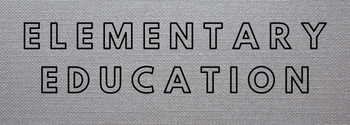My Reflection Experience Of Nursing Incident
Nursing professionals can benefit from reflection writing to gain insight and learn from their mistakes. Nursing is a profession that requires self-reflection to identify and acknowledge one’s strengths and weaknesses. This allows for the nurse to take responsibility for their own professional growth and make necessary changes. Gibb’s Reflective Cycle was selected by me as it allows me the opportunity to reflect on the event and to share my feelings.
As a placement nurse, I was asked to care for 4 patients in the Hospital Umum Sarawak surgical ward. A night shift registered nurse from night shift informed us that one patient had an indwelling device (IDC) and was removed by the patient. The nurse informed us that the patient’s incontinent help was moderately damp at night. However, the patient was still complaining that she could not void her bladder which led me to think the patient was confused. After a quick examination, I discovered a distended lower abdomen. After looking through her medical records, I found that she had been given PRN (as necessary) analgesia to relieve abdominal pain. However, there was no further investigation or treatment for the pain. In addition, I was able to assess the patient’s mental state and find that she is well-adjusted to time, place and person. She had no previous history of confusion.
I was concerned that the situation was not correct, and immediately reported it my mentor. She was pleased with my initative and told me to run an ultrasound bladder check.
Bladder scan revealed that 998 mls of urine was still in bladder. I immediately noticed my mentor, who then ordered me to insert IDC. The assistant in nursing staff (PPK), who is also on the floor, helped me keep an eye on the patients and answered their questions. Patient felt more comfortable after IDC was inserted. Her urine output increased to 1650mls in just a few minutes. Patient thanked us and said that we did not ignore her pain or consider her confused. She also expressed gratitude for taking prompt action to make herself comfortable.
I believe the night nurse who changed the patient’s incontinent aid was negligent. She was probably confused because the patient said she could not void. The night nurse may have mistakenly assumed that the patient was voiding normally because she had not empty her bladder completely. My mentor later spoke with the night nurse and asked her if she had attended a bladder scan. She also asked if any senior nurses were informed about the situation. The nurse stated that she was very busy and didn’t consider it. My mentor explained how important it was to be thorough in assessing the patient and not make her own judgments. My mentor and I discussed the legal requirements for nurses to perform their duty of care. She also explained how negligence could cause harm to patients. My mentor was assured her by the nightshift nurse that she will not neglect patient’s care and will fulfill her duty to care for future patients.
Australian Nursing and Midwifery Council have outlined the competencies that nurses need to be competent and safe in nursing practice. ANMC competency requires registered nurses to conduct a thorough and accurate assessment of each patient before they can perform any interventions (NMBA 2006). This scenario requires that the night nurse perform a complete assessment (physical examination and bladder scanning) of the patient who complains of abdominal pain and discomfort. The nurses have the responsibility to take care of their patients. Reflecting on this case has made me more aware of the importance and responsibility of nursing care.
Reflection on the incident made me realize that I did a good job, but that I should have done more to help my patient. I am now aware that if my patient had been confused and I ignored it, it could have put their well-being in danger. There is a greater risk of bladder injury if the bladder retains more urine than 800mls (Nguyen et. al. 2016,). There are also many complications that can be associated with chronic or acute urinary retention. These include infection, cyst formation, kidney damage, reflux, and pouching or diverticulum. The situation could have become even worse if it wasn’t taken in time. As a nurse, I am legally required to identify and promptly respond to compromised or unsafe care. As a nurse, it is important to maintain patient well-being. I also have to challenge colleagues’ practices if they pose a risk to patient’s health. Additionally, this incident taught me how important it is to conduct a thorough patient assessment in order to determine if there are any health issues. The problem was quickly identified by conducting a thorough patient assessment. This was then communicated to the multidisciplinary team. This is a case that shows me how important it is to be patient-centered and holistic, communicate effectively and work together as a team in order for a smooth transition to registered nursing.
The NMBA (2008) holds nurses responsible for providing competent and safe nursing care. Registered nurses are required to follow the national competency standards to ensure they fulfill their duty of care. This has allowed me to learn how to care for others and improve my assertiveness. A new nurse must also possess the ability to communicate effectively. Patient-centered care means listening to patients, understanding their individual needs and including them in their care (Stein- Parbury 2012). In the same vein as the previous incident, communication skills are essential for beginning registered nurses.
It can be challenging to make the transition from student to professional nurse. A new graduate nurse must prioritize care, manage workloads and make a clinical decision. The other key competencies required for a new graduate nurse are practicing within the evidence based framework,mentoring,regularly monitoring patient progress,care coordinating and advocating for patient. In addition to these skills, a novice practitioner should also be able to mentor and lead others, depending on their expertise and practice scope.
Nursing requires leadership skills. A graduate nurse can also be expected to manage a team based on company policies and protocols after graduation. To demonstrate and build leadership capabilities, the new graduate nurse must work with a small group that includes staff with different competencies and skills (Thoms & Duffield (2012)). A nurse must be able to delegate tasks, provide feedback, communicate effectively with others, and participate in professional development. New graduate nurses often find it challenging to delegate tasks. It is essential that delegated tasks are performed correctly and safely by providing support, mentoring, and constant supervision. To motivate your team, it is important that you provide appropriate feedback as a leader.
Hence, reflecting on this incident has helped me to get insight into my clinical practice, understand the importance of comprehensive assessment, assertiveness, holistic patient centered care,interdisciplinary team work,leading mentoring and delegating within the team for a successful transition into the role of registered nurse.
This reflective piece is based on an experience with wound dressings management in aged care. Gibbs reflective cycle can be used. This will allow you and your caregivers to share the experience, discuss the emotions, assess the various components, and then conclude with an action planning that shows how to prevent it from happening again. (Wain, 2017). Reflection is used to identify and exploit strengths and weaknesses in order to learn more. The wound dressing reflection was chosen as it is the most commonly practiced skill in aged care.
An elderly patient suffering from bullous pimples was treated. Both legs were covered in fluid. The student nurse had been asked by the RN for help in dressing the wound. The student nurse helped the RN remove the old dressing and clean the wound. The student nurse observed the RN clean the wound and change the dressing. The RN used inadine to first dress the wound and then applied a second dressing. The RN also showed her how to care for wounds using different dressings.
Student nurses observed that hand washing and infection control were maintained throughout the procedure. Hand hygiene and hand washing are important for infection control. Under the guidance of an RN, the student nurse was able to apply dressings to another leg. The student nurse documented that both legs had been washed, and that they were redressed in accordance with the plan. It is vital to have nursing documentation. This document reflects nursing assessments and interventions.
The wound was discovered by the student nurse when the RN removed its old dressing. This was her first observation of a major acute wound in her clinical placement. She felt empathy for the patient. It made her eager to assist the RN when she was wound caring. The RN asked her to dress the second leg. She was also anxious. She was assisted by the RN and felt confident performing the skill. She felt like she was improving her skills with each placement.
Positive outcomes were achieved through the clinical skills. The student nurse learned about tissue viability and wound healing. Following the RN’s instructions, she performed the skill using the aseptic technique. She concentrated on the aseptic principles and control of infection. An aseptic technique prevents micro-organisms infected area from reaching vulnerable areas. She gained the ability to build rapport and provide patient-centred services. She was not able to communicate well with her patient. While she communicated with her patient prior to wound dressing, she didn’t talk to her patient during the skill because she was too focused on her own work. Communication is a key component in health care. It can increase patient satisfaction, decrease anxiety, and build confidence (Negi and al., 2017).
The overall experience was positive in terms of learning about age care. In a clinical setting, the student nurse did the first wound dressing on a patient. The student nurse learned about wound assessment techniques and non-contact wound dressing. Before performing any type of procedure, you must first assess the wound. It is crucial to assess the wounds before any procedure. To provide patient care, wounds must be evaluated regularly. A wound assessment should consider the following: the location of the wound, the aetiology, blood type, exudate and odour of the wound. The student nurse also learned about different types. It is important to choose the right dressing for your wound. She learned from an RN that dressings should expose the wound to maximum light. The dressings can reduce the potential for bacteria to thrive.
The student nurse also commented that the RN showed excellent patient-centred caring. After six years of caring for the elderly with leg blisters, the nurse had picked up a few Greek words (as the resident was Greek). This helped the nurse to understand the resident better and provide comfort. She admires the RN’s attitude and hopes to be able to emulate it in her own practice.
Gibbs reflective cycles have helped student nurses to look deeply at their experiences and encouraged them to explore their feelings. Through this experience, she has seen positive results. She hopes to use this learning opportunity to increase her clinical skills and promote critical thinking. She should also have been more interested in the patient to offer more comfort and protection. Communication is essential for good results.
The student nurse plans to continue her education on wound management and will watch videos of nurses in the field. She will continue to be educated about dressing types she is unfamiliar with. She didn’t communicate with the patient during the entire procedure. She will work to improve communication throughout the process and not just at its end. The RN’s feedback will allow her to continue improving her skill during her next clinical placement.



